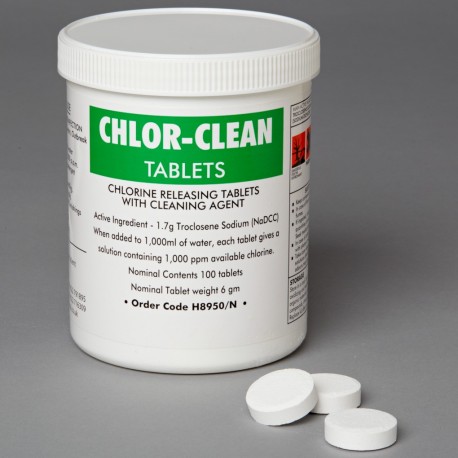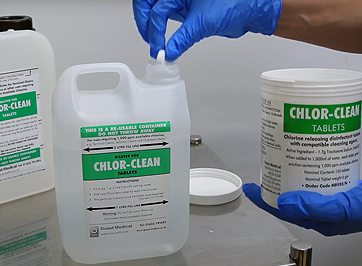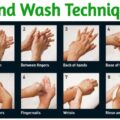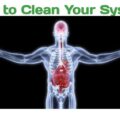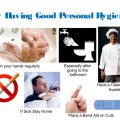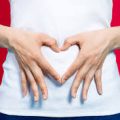Chlor-Clean is a tablet that once dissolved in water, will give a solution that will both clean and disinfect at one and the same time. This not only reduces the time taken to perform the cleaning process but improves the efficiency of the disinfection at the same time. Chlor-Clean tablets incorporate Sodium dichloroisocyanurate, the chemical that is more effective against Clostridium difficile spores than hypochlorite.
Know the difference between cleaning, disinfecting, and sanitizing
Cleaning removes germs, dirt, and impurities from surfaces or objects. Cleaning works by using soap (or detergent) and water to physically remove germs from surfaces. This process does not necessarily kill germs, but by removing them, it lowers their numbers and the risk of spreading infection.
Disinfecting kills germs on surfaces or objects. Disinfecting works by using chemicals to kill germs on surfaces or objects. This process does not necessarily clean dirty surfaces or remove germs, but by killing germs on a surface after cleaning, it can further lower the risk of spreading infection.
Sanitizing lowers the number of germs on surfaces or objects to a safe level, as judged by public health standards or requirements. This process works by either cleaning or disinfecting surfaces or objects to lower the risk of spreading infection.
How To Use Chlor Clean Tablets
The Chlor-Clean solution produces 1,000 p.p.m. available chlorine, as recommended by the DoH and HPA. Tests using BS EN 1276 Standard, by an independent laboratory, have shown Chlor Clean solutions to be effective against infection-causing bacteria such as E. Coli, Pseudomonas, Klebsiella, Staphylococcus (M.R.S.A.), Enterococcus, Acinetobacter, and Clostridium difficile. Further testing by an independent laboratory has shown Chlor-Clean to exceed the requirements of the BS EN 13704 Sporicidal Standard against Clostridium difficile spores.
Why Chlor-Clean is the disinfectant of choice in major Hospitals and Aged Care providers:
Efficiency: One-step clean and disinfect process halves the time taken to perform your disinfection process, saving you money!
Simplicity & Accuracy: One tablet in one litre of water produces a consistent 1000ppm when hospital-grade disinfection is required.
Safety: Chlor-Clean is a pH-neutral product that is safer for your staff to handle and the tablet preparation reduces the risk of exposure.
Effectiveness: Hospital-grade disinfectant. Listed with the TGA (Australian Register of Therapeutic Goods – ARTG 348450) for use against COVID-19 (SARS-CoV-2 the cause of COVID-19) with five minutes of contact time.
Service: Training, equipment & support is available on an ongoing basis. Making the change to Chlor-Clean easy!
Watch the video below to learn how to use chlor-clean tablets;
Chlor-Clean Hazards
Chlorinated cleaning products can help protect against seasonal flu outbreaks and episodes of foodborne illness. Daycare centers, hospitals, restaurants, and other public facilities rely upon the disinfectant qualities of chlorine-based cleaners to keep the environment germ-free. But Chlorine can be hazardous in a variety of ways, most notably as a strong eye, skin, and respiratory irritant. If mixed with other cleaners like ammonia, chlorine bleach can release chlorine gas–exposure to which can cause coughing, shortness of breath, chest pain, nausea, and other symptoms.
What are the most important things to know about chlorine in an emergency?
Inhalation: VERY TOXIC, can cause death. Can cause severe irritation of the nose and throat. Can cause severe lung injury. Can cause life-threatening accumulation of fluid in the lungs (pulmonary edema). Symptoms may include coughing, shortness of breath, difficult breathing, and tightness in the chest. Symptoms may develop hours after exposure and are made worse by physical effort. Long-term damage may result from severe short-term exposure. A single exposure to a high concentration can cause a long-lasting condition like asthma. If this occurs, many things like other chemicals or cold temperatures can easily irritate the airways. Symptoms may include shortness of breath, tightness in the chest, and wheezing. {Reactive Airways Dysfunction Syndrome (RADS)}.
Skin Contact: CORROSIVE. The gas irritates or burns the skin. Permanent scarring can result. Direct contact with the liquefied gas can chill or freeze the skin (frostbite). Symptoms of mild frostbite include numbness, prickling, and itching. Symptoms of more severe frostbite include a burning sensation and stiffness. The skin may become waxy white or yellow. Blistering, tissue death, and infection may develop in severe cases.
Eye Contact: CORROSIVE. The gas irritates or burns the eyes. Permanent damage including blindness can result. Direct contact with the liquefied gas can freeze the eye. Permanent eye damage or blindness can result.
Ingestion: Not a relevant route of exposure (gas).
Effects of Long-Term (Chronic) Exposure: May harm the respiratory system. Can irritate and inflame the airways.
Carcinogenicity: Not known to cause cancer.
International Agency for Research on Cancer (IARC): Not specifically evaluated.
American Conference for Governmental Industrial Hygienists (ACGIH): A4 – Not classifiable as a human carcinogen.
Teratogenicity / Embryotoxicity: Not known to harm the unborn child.
Reproductive Toxicity: Not known to be a reproductive hazard.
Mutagenicity: Not known to be a mutagen.
What are first aid measures for chlorine?
Inhalation: Take precautions to ensure your own safety before attempting rescue (e.g. wear appropriate protective equipment). Move victim to fresh air. Keep at rest in a position comfortable for breathing. If breathing is difficult, trained personnel should administer emergency oxygen. DO NOT allow the victim to move about unnecessarily. Symptoms of pulmonary edema may be delayed. Immediately call a Poison Centre or doctor. Treatment is urgently required. Transport to a hospital.
Skin Contact: Gas: Flush with lukewarm, gently flowing water for 5 minutes. If irritation or pain persists, see a doctor. Liquefied gas: quickly remove the victim from the source of contamination. DO NOT attempt to rewarm the affected area on site. DO NOT rub the area or apply direct heat. Gently remove clothing or jewelry that may restrict circulation. Carefully cut around clothing that sticks to the skin and remove the rest of the garment. Loosely cover the affected area with a sterile dressing. DO NOT allow the victim to drink alcohol or smoke. Immediately call a Poison Centre or doctor. Treatment is urgently required. Transport to a hospital.
Eye Contact: Gas: immediately flush the contaminated eye(s) with lukewarm, gently flowing water for 5 minutes, while holding the eyelid(s) open. If irritation or pain persists, see a doctor. Liquefied gas: avoid direct contact. Wear chemical protective gloves if necessary. Immediately and briefly flush with lukewarm, gently flowing water. DO NOT attempt to rewarm. Cover both eyes with a sterile dressing. DO NOT allow the victim to drink alcohol or smoke. Immediately call a Poison Centre or doctor. Treatment is urgently required. Transport to a hospital.
Ingestion: Not applicable (gas).
First Aid Comments: All first aid procedures should be periodically reviewed by a doctor familiar with the chemical and its conditions of use in the workplace.
SEE:EPA Approves Glyclean For Use Against Coronavirus


